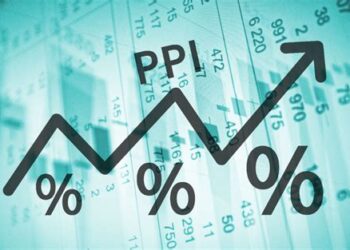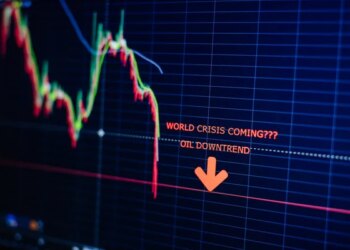In the dynamic landscape of global finance, identifying the next wave of growth areas is paramount for investors seeking to maximize returns and diversify their portfolios. While established markets offer stability, it’s the emerging investment hotspots that often present the most compelling opportunities for substantial capital appreciation and innovation. These nascent markets and sectors are characterized by rapid economic development, technological adoption, shifting demographics, and often, undervalued assets. This comprehensive guide will delve deep into the characteristics that define an “emerging hotspot,” explore various geographical and sectoral frontiers poised for significant expansion, and provide actionable insights for navigating these potentially high-reward, high-risk environments. We’ll examine key drivers of growth, potential challenges, and strategies for identifying and investing in these burgeoning opportunities.
Defining an Emerging Investment Hotspot

An emerging investment hotspot isn’t just any growing market; it possesses a unique combination of factors that signal a high potential for outsized returns.
- A. Robust Economic Growth Potential:
- A. High GDP Growth Rates: Sustained Gross Domestic Product (GDP) growth, often significantly higher than developed economies, is a primary indicator. This implies increasing economic activity, rising incomes, and expanding consumer markets.
- B. Favorable Demographics: A large, young, and growing population workforce, particularly one that is increasingly urbanized and educated, fuels consumer spending, innovation, and labor supply. This creates a powerful demand-side engine for growth.
- C. Expanding Middle Class: The burgeoning of a middle class indicates rising disposable income, leading to increased demand for goods, services, and improved living standards. This demographic shift often precedes significant consumer market expansion.
- D. Urbanization Trends: Rapid migration from rural to urban areas drives infrastructure development, real estate demand, and concentrated consumer markets, creating fertile ground for various businesses.
- B. Structural Reforms and Supportive Policies:
- A. Government Commitment to Growth: Governments actively implementing policies that promote economic liberalization, foreign direct investment (FDI), and business-friendly regulations. This could include tax incentives, ease of doing business reforms, and protection of property rights.
- B. Infrastructure Development: Significant investments in transportation, energy, communication networks, and logistics are crucial. Improved infrastructure reduces business costs, facilitates trade, and enhances overall productivity.
- C. Regulatory Transparency: Clear, consistent, and predictable regulatory frameworks instill investor confidence. Reduced bureaucracy and corruption attract both local and foreign capital.
- D. Trade Liberalization: Participation in free trade agreements and reduction of trade barriers open up new markets for exports and attract imports that can drive domestic innovation.
- C. Technological Adoption and Innovation:
- A. Digital Transformation: Rapid adoption of digital technologies, mobile internet, and e-commerce platforms can leapfrog traditional development stages, creating new industries and efficiencies.
- B. Startup Ecosystems: The emergence of vibrant startup communities, incubators, and venture capital funding indicates a strong culture of innovation and potential for disruptive new businesses.
- C. Innovation Hubs: Development of specialized technology or research hubs that attract talent and investment in specific sectors (e.g., AI, biotech, renewable energy).
- D. Underpenetrated Markets and Untapped Potential:
- A. Low Market Saturation: Many emerging markets have low penetration rates for various goods and services (e.g., banking, insurance, high-speed internet, modern retail), signifying immense room for growth.
- B. Resource Abundance: Countries rich in natural resources (minerals, energy, agriculture) can leverage these assets for economic development and export revenues, though this also carries commodity price volatility risk.
- C. Market Inefficiencies: While challenging, inefficiencies can also present opportunities for savvy investors who can identify and capitalize on mispricings or underserved niches.
- E. Capital Market Development:
- A. Increasing Liquidity: Growing stock exchanges and bond markets with increasing trading volumes and a wider range of financial instruments.
- B. Investor Protection: Stronger legal frameworks for investor protection, corporate governance, and transparency.
- C. International Integration: Greater openness to foreign portfolio investment and integration into global financial systems.
Geographical Hotspots
While the specific countries change over time, certain regional trends indicate where future opportunities might lie.
A. Southeast Asia (ASEAN Bloc)
- A. Diverse Economies, Unified Growth: Comprising countries like Indonesia, Vietnam, the Philippines, Thailand, and Malaysia, ASEAN is a dynamic economic bloc with a combined GDP exceeding $3.6 trillion (as of 2023).
- B. Demographic Dividend: A young and growing population, with a rapidly expanding middle class, drives robust domestic consumption. Indonesia, with over 280 million people, is a prime example.
- C. Manufacturing Hub Shift: Many companies are diversifying supply chains away from traditional manufacturing centers, boosting countries like Vietnam and Thailand as attractive alternatives due to lower labor costs and supportive government policies.
- D. Digital Economy Boom: Rapid adoption of e-commerce, fintech, and ride-hailing services. Indonesia’s digital economy alone is projected to reach significant valuations.
- E. Infrastructure Investment: Significant government and private sector investment in roads, ports, airports, and digital networks across the region.
- F. Trade Agreements: Benefit from regional and global trade agreements like the RCEP (Regional Comprehensive Economic Partnership).
- Specific Opportunities: Manufacturing, digital services, consumer goods, renewable energy, and infrastructure.
B. Parts of Africa
- A. Demographic Tsunami: Africa is home to the world’s youngest and fastest-growing population. This demographic dividend, coupled with increasing urbanization, presents enormous long-term potential for consumer markets and labor force.
- B. Digital Leapfrogging: Mobile technology is transforming finance, education, and commerce across the continent, bypassing traditional infrastructure limitations. Fintech, mobile banking, and e-health are booming.
- C. Resource Abundance: Many African nations possess vast natural resources, driving commodity exports and attracting foreign investment in extraction and processing industries.
- D. Improving Governance and Stability: While challenges remain, many countries are demonstrating improving political stability, governance, and business environments, attracting more foreign direct investment.
- E. Infrastructure Drive: Significant investments are being made in cross-border infrastructure, energy projects, and transportation networks.
- F. AfCFTA (African Continental Free Trade Area): This ambitious agreement aims to create a single market for goods and services across the continent, unlocking immense intra-African trade and investment opportunities.
- Specific Opportunities: Fintech, renewable energy, agriculture, consumer staples, infrastructure, and mining. Key markets to watch include Nigeria, South Africa (though with challenges), Kenya, Egypt, and Ghana.
C. Latin America
- A. Commodity Powerhouses: Countries like Brazil, Chile, and Peru are major exporters of agricultural products, minerals, and energy, benefiting from global commodity demand.
- B. Digital Transformation: E-commerce, fintech, and digital services are rapidly expanding, particularly in larger economies like Brazil and Mexico.
- C. Political and Economic Reforms: Some countries are undergoing significant reforms to improve fiscal stability, reduce bureaucracy, and attract foreign investment.
- D. Proximity to Major Markets: Proximity to the North American market provides a competitive advantage for certain industries.
- E. Growing Middle Class: Urbanization and a rising middle class fuel domestic consumption.
- Specific Opportunities: Agriculture, renewable energy, fintech, e-commerce, and logistics.
D. Central and Eastern Europe
- A. EU Integration: Countries like Poland, Romania, and others benefit from EU membership, structural funds, and access to the vast EU single market. Others aspiring for EU membership are implementing reforms.
- B. Skilled Workforce: Often boasts highly educated and skilled labor forces at competitive costs compared to Western Europe.
- C. Manufacturing and IT Outsourcing Hubs: Attracting foreign investment in manufacturing, automotive, and IT services due to competitive labor and strategic location.
- D. Infrastructure Development: Continued investment in modern infrastructure supported by EU funds.
- Specific Opportunities: Automotive, IT services, renewable energy, manufacturing, and real estate.
Sectoral Hotspots

Beyond geography, certain industries are experiencing transformative growth globally, regardless of their immediate location.
A. Renewable Energy and Green Technologies
- A. Global Decarbonization Push: Driven by climate change concerns, government policies (incentives, regulations), and declining technology costs, the transition to clean energy is a massive global undertaking.
- B. Solar and Wind Power: Continued technological advancements make these increasingly competitive with fossil fuels.
- C. Energy Storage: Battery technology and other storage solutions are critical enablers for widespread renewable adoption.
- D. Electric Vehicles (EVs) and Infrastructure: The rapid shift to EVs creates huge demand for charging infrastructure, battery components, and related technologies.
- E. Green Hydrogen: An emerging technology with the potential to decarbonize heavy industries and long-haul transport.
- F. Circular Economy and Waste Management: Innovations in recycling, sustainable materials, and waste-to-energy solutions.
- Investment Focus: Solar panel manufacturers, wind turbine companies, battery technology firms, EV charging network providers, green hydrogen producers, and companies specializing in sustainable waste solutions.
B. Artificial Intelligence (AI) and Machine Learning (ML)
- A. Transformative Impact: AI is set to revolutionize every industry, from healthcare and finance to manufacturing and retail, driving unprecedented productivity gains and new business models.
- B. Generative AI: The rapid advancements in generative AI (like large language models and image generation) are creating new applications and significant investment interest.
- C. Data Analytics and Cloud Computing: The backbone of AI, continued growth in data generation and the need for robust cloud infrastructure fuels this sector.
- D. Automation and Robotics: AI powers advanced robotics and automation solutions across manufacturing, logistics, and services.
- Investment Focus: AI software companies, semiconductor manufacturers (especially those producing AI chips), cloud service providers, robotics companies, and companies applying AI to specific industry verticals (e.g., AI in healthcare diagnostics).
C. Biotechnology and Healthcare Innovation
- A. Aging Global Population: A demographic trend that drives increasing demand for healthcare services, pharmaceuticals, and medical devices.
- B. Genomic Medicine: Breakthroughs in gene editing (CRISPR), personalized medicine, and RNA-based therapies (like mRNA vaccines) are revolutionizing disease treatment and prevention.
- C. Digital Health: Telemedicine, wearable health tech, AI-powered diagnostics, and health data platforms are transforming healthcare delivery and accessibility.
- D. Rare Diseases and Oncology: Continued focus on developing therapies for previously untreatable conditions.
- Investment Focus: Pharmaceutical companies with strong R&D pipelines, biotech startups, medical device manufacturers, digital health platforms, and companies specializing in genomics and personalized medicine.
D. Cybersecurity
- A. Escalating Threats: As digitalization increases, so do cyber threats. Businesses, governments, and individuals face growing risks of data breaches, ransomware, and cyber espionage.
- B. Regulatory Landscape: Increasing regulations (e.g., GDPR, CCPA) mandate robust cybersecurity measures, driving demand for solutions.
- C. Cloud Security: The shift to cloud computing necessitates advanced cloud security solutions.
- D. AI-Powered Security: AI and ML are increasingly used to detect and respond to sophisticated cyberattacks.
- Investment Focus: Cybersecurity software companies, managed security service providers, identity and access management (IAM) firms, and companies specializing in threat intelligence and incident response.
E. E-commerce and Logistics
- A. Permanent Shift in Consumer Behavior: The pandemic accelerated the global shift to online shopping, making e-commerce a permanent fixture.
- B. Last-Mile Delivery: The complex challenge of efficient last-mile delivery drives innovation in logistics, warehousing, and automation.
- C. Cross-Border E-commerce: Growing opportunities for businesses to sell globally.
- D. Supply Chain Optimization: Companies focused on making global supply chains more resilient, efficient, and transparent.
- Investment Focus: E-commerce platforms, logistics and warehousing companies, automation solutions for fulfillment centers, payment processors, and supply chain technology providers.
Strategies for Investors
Investing in emerging hotspots carries higher risk but also higher potential reward. A well-thought-out strategy is essential.
A. Thorough Due Diligence
- A. Beyond Headlines: Don’t just follow the hype. Conduct in-depth research on the specific companies, sectors, and countries.
- B. Fundamental Analysis: Evaluate financial health, management quality, competitive landscape, and growth prospects of individual companies.
- C. Macroeconomic Assessment: Understand the political stability, regulatory environment, currency risks, and economic policies of the country or region.
B. Diversification is Paramount
- A. Geographic Diversification: Don’t put all your emerging market capital into one country. Spread it across several promising nations to mitigate country-specific risks.
- B. Sectoral Diversification: Within emerging markets, diversify across different industries.
- C. Asset Class Diversification: Combine exposure to emerging market equities with emerging market bonds or other asset classes.
C. Long-Term Horizon
- A. Volatility Expectation: Emerging markets are inherently more volatile. Be prepared for significant price swings.
- B. Growth Takes Time: The structural changes and economic development driving growth take years, even decades, to fully materialize. Patience is key.
D. Start Small and Scale Up
- A. Allocate Proportionately: Emerging market investments should typically be a smaller portion of a well-diversified portfolio, especially for new investors.
- B. Gradual Exposure: Start with a modest allocation and gradually increase it as you gain confidence and understanding, and as your portfolio grows.
E. Consider Professional Guidance or Funds
- A. Actively Managed Funds: Investing in actively managed emerging market mutual funds or ETFs run by experienced fund managers can provide expert selection and risk management. These managers often have local insights.
- B. Specialist Advisors: Consult financial advisors who specialize in international or emerging market investments.
- C. Passive ETFs: Low-cost ETFs that track broad emerging market indices offer diversified exposure without the high fees of active management.
F. Monitor Geopolitical and Regulatory Developments
- A. Stay Informed: Keep abreast of political stability, regulatory changes, and international relations in the regions you invest in. These factors can have a profound impact.
- B. Currency Risk: Be aware of currency fluctuations, which can impact your returns when converting back to your home currency. Hedged ETFs can mitigate this risk.
Conclusion
Identifying and strategically allocating capital to emerging investment hotspots is a powerful component of a truly diversified and growth-oriented portfolio. It requires a blend of foresight, rigorous analysis, and a patient, long-term outlook. By focusing on fundamental economic drivers, supportive policy environments, technological innovation, and careful risk management, investors can confidently navigate these dynamic frontiers. The world is constantly evolving, and so too are the opportunities for wealth creation. Staying ahead of these trends, rather than simply reacting to them, is the hallmark of a successful investor in the 21st century.












